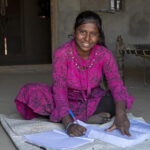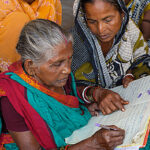“Only 18% women in India have access to sanitary hygiene in India”
“We empower women by educating her and enhance India’s sanitation sector."
Are you aware of the fact – One in ten deaths in the country is linked to poor hygiene standards. Around 450m people relieve themselves in playgrounds, behind trees, by roadsides, and on railway tracks and river banks.
India has seen an array of movements aiming to educate women about menstrual hygiene and sanitation. The taboo associated with menstruation outnumbers the women who have to go through this process every month. From not touching the pickle, not stepping in the temple to not entering the kitchen area, India has menstruation taboos and beliefs which have almost crippled its women with chronic Reproductory infections. The taboos are not only limited to rural but even urban areas. Therefore, the need to talk and educate in favour of menstruation hygiene practices is extremely necessary at a time like this.





Previous
Next
The current state of menstrual hygiene and sanitation in India is not very encouraging. As per records, only 18% women know how to use a sanitary napkin, the unrecorded number would be far lesser than this. “In our research, we found that some of the women did not even know that they were not supposed to wear a sanitary napkin for more than 6-8 hours. Some of them wear it for 12-14 hours a day, making them prone to bacterial infection”.
Menstrual hygiene and sanitation is a much talked about topic today, unfortunately only in the urban areas where education is prevalent. We aim to educate women and men in rural areas. BGC Foundation initiative includes distribution of free sanitary napkins, workshops on how to make a sanitary napkin, run seminars and classes on menstruation hygiene for both girls and boys and defying menstruation taboos through involving middle-aged men and women in the menstruation hygiene drive.
As much as 82 of percent women in India still do not know what a sanitary napkin is or what it is used for – an alarming statistic but an even tougher number to counter.
What is the danger when a girl does not practice menstrual hygiene?
Poor menstrual hygiene can lead to many issues, such as fungal or bacterial infections of the reproductive tract and the urinary tract. Irritation of the skin causes discomfort and can possibly result in dermatitis – a medical condition in which the skin swells, turns red, and at times becomes sore with blisters.
Why is sanitation important for women?
Safe water and hygiene for women can reduce the risk of infections and death for infants and mothers by up to 25 percent. Sanitation for women, safe water access, and improved hygiene saves their lives and the lives of their infants, reducing maternal and infant deaths drastically.
What did Indians use for their periods?
In India, millions of women still use cloth, corn husks and even ash during their periods.
How many women get periods in India?
There are over 355 million menstruating women and girls in India, yet millions of women across the country still face significant barriers to comfortable and dignified experience with menstrual health.
What causes poor sanitation?
The biggest cause of poor sanitation is simply lack of education. Even the simple act of washing hands regularly can have a huge impact on the overall health of a community.
What is the stigma of menstruation in India?
Menstruation is a subject in many parts of the world that holds a lot of stigmas. In Hinduism, a commonly practiced religion in India, a woman is considered “dirty and impure” during menstruation. This leads to various restrictions that differ depending on the region and denomination of Hinduism.

The real impact will only come when there is a collective understanding of menstruation that goes well beyond sanitary napkins.
WHAT YOUR DONATION CAN DO.
INR 100 can comfort a month’s menstruation problem of one women/girl.
This is an Alert
***All donations made to BGC Foundation are exempted from Tax under Section 80G of the Income Tax Act 1961.
ALL CONTACTS
- CENTRAL OFFICE = C-101, Jhilmil Colony, Delhi-110095
- BRANCH OFFICE = R-604, Great Value Sharanam, Sector- 107,Noida,U.P-201301
- Office 08700450443
- bgcfoundationorg@gmail.com
GALLERY
-

- Anjali Dodiyar Meena 15 – year – old, a 9th class student studying at home. Due to the COVID pandemic Schools were shut and classes were conducted online, unfortunately no one is Anjali family has smart phone, due to that she could not attend online classes, lucky since 1st week of December schools are open and she was exited to go back to school, but the reality was hard for her, other students from her class could attend online class and they are advanced in the study. But Anjali is not letting this to stop her from studying; she’s working hard to catch up with the rest of her classmates with the help from her teachers and sister. Education in India took a massive blow due to the pandemic and the resultant lockdowns. Even as the unlock periods allowed a little of re-opening and remote learning was established as an alternative, bulk of schools remain closed in India. Sanjanpura village, Sagwara Block, Dungarpur District, Rajasthan, India, 23 Dec 2020. Photo © Sri Kolari
- Copyright BGC FOUNDATION






